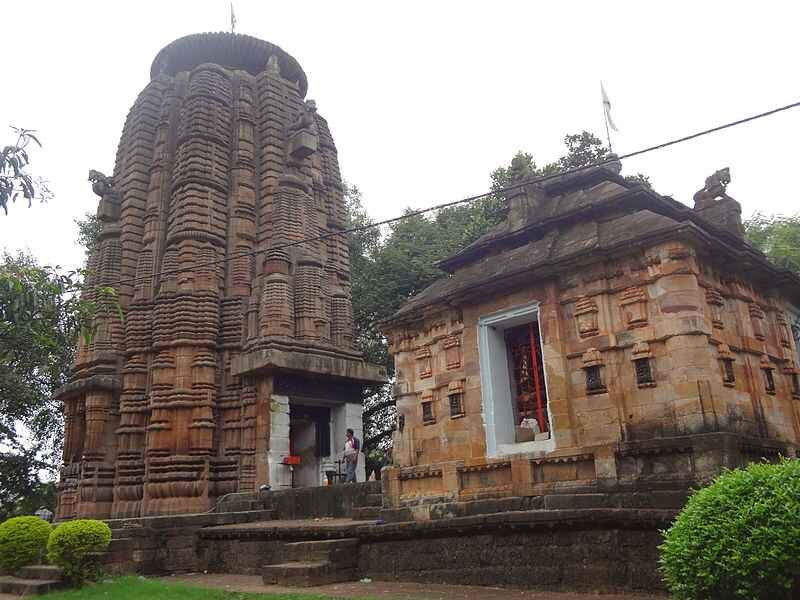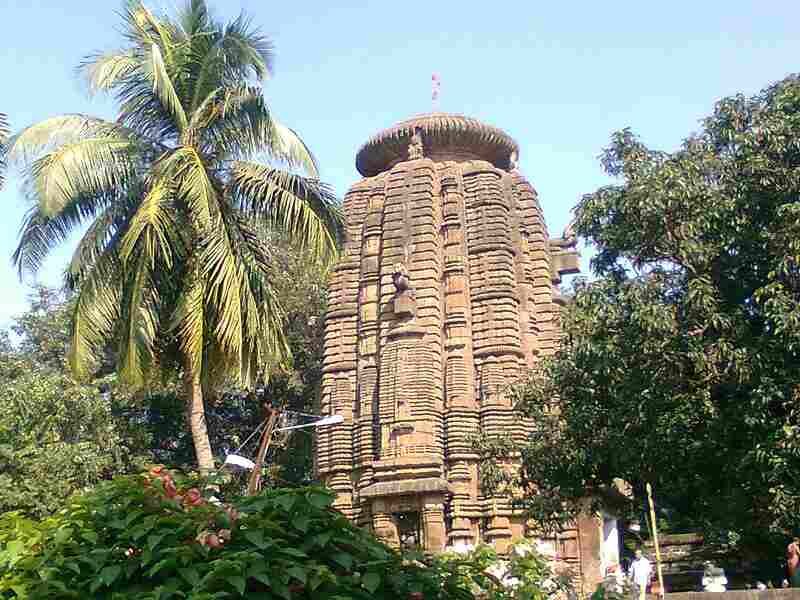The Rameshwar Temple, also known as Rameshwar Deula, is a significant religious site in Bhubaneswar, Odisha. Renowned for its architectural beauty and rich historical background, this temple draws visitors and devotees alike.
just 2 kilometers from the famous Lingaraj Temple, Rameshwar is often called the Mausima temple, symbolizing its connection to the larger Lingaraj shrine.

Historical Significance
Dating back to the 9th century, Rameshwar Temple is believed to have been constructed during the early period of the Somavamsi dynasty. The temple showcases a transitional phase in the Kalinga architectural style, characterized by its distinctive rekha deula structure.
The temple’s main deity is a Shiva Lingam made of black chlorite, housed within a circular yonipitha, which signifies the divine feminine energy of Shakti.
Mythological Background
The name Rameshwar is significant in itself, as it draws a parallel with the famous Rameshwaram Temple in Tamil Nadu. According to legend, when Lord Rama was returning from Lanka after his victory over Ravana, Goddess Sita expressed a desire to worship Lord Shiva.
To fulfil her wish, Lord Rama built a lingam at this site. This act of devotion is commemorated in the temple’s name, Rameshwar, meaning “Lord of Rama.”

Architectural Marvel of Rameshwar Temple
The Rameshwar Temple in Bhubaneshwar, Odisha, is a splendid example of the Kalinga style of architecture, which flourished between the 6th and 13th centuries. This temple, also known as Mausi Maa Temple, is a testament to the architectural brilliance and cultural heritage of the region.
Structural Design
The temple follows the traditional Kalinga architectural style, characterized by its distinct components: the deul (sanctum sanctorum) and the jagamohana (assembly hall). The deul is the main tower, which rises majestically, symbolizing Mount Meru, the axis of the universe in Hindu cosmology. The jagamohana, on the other hand, is a rectangular hall where devotees gather for prayers and rituals.
Intricate Carvings
One of the most striking features of the Rameshwar Temple is its intricate carvings. The walls of the temple are adorned with detailed sculptures depicting scenes from Hindu mythology, including episodes from the Ramayana and Mahabharata². These carvings are not just decorative but also serve as a narrative tool, illustrating the rich mythological heritage of India.
The temple’s entrance is flanked by two massive stone lions, a common feature in Kalinga temples, symbolizing protection and strength. The door frames and lintels are intricately carved with floral motifs, deities, and mythical creatures, showcasing the artisans’ exceptional craftsmanship.
The Sanctum Sanctorum
Inside the sanctum sanctorum, the main deity, Lord Shiva, is worshipped in the form of a lingam. This lingam is consecrated within a circular yonipitha made of chlorite, a unique feature that adds to the temple’s architectural significance². The sanctum also houses an image of Goddess Durga, adding to the temple’s spiritual ambiance.
The Temple Complex
The Rameshwar Temple complex includes several smaller shrines dedicated to other deities. Notably, there are temples dedicated to Lord Rama’s brothers, Laxman, Bharat, and Shatrughna, making it a unique ensemble of religious structures. These smaller shrines are built in the same architectural style, maintaining the aesthetic harmony of the complex.
Festivals and Celebrations
Rameshwar Temple is steeped in legends and local folklore. One of the most significant festivals celebrated here is the Rukuna Rath Jatra, held annually in March or April. During this festival, Lord Lingaraj, represented by a bronze statue of Chandrashekhar, along with Rukmini and Basudeva, is taken to the Rameshwar Temple in a grand procession. The deities stay at the temple for four days before returning to their abode at the Lingaraja Temple.

Nearby Attractions
Bhubaneshwar, often called the “City of Temples,” offers a plethora of attractions for visitors. Just a short distance from the Rameshwar Temple, you can explore the iconic Lingaraja Temple, the Udayagiri and Khandagiri Caves, and the famous Puri Beach. For those interested in history and culture, the Museum of Tribal Arts & Artifacts is a must-visit.
Accommodation Options
When planning your visit to the Rameshwar Temple, you’ll find a range of accommodation options to suit every budget. From luxurious hotels to budget-friendly lodgings, Bhubaneshwar has it all. Some popular choices include the Mayfair Lagoon, Trident Bhubaneswar, and Ginger Bhubaneswar⁸. These hotels offer comfortable stays with modern amenities, ensuring a pleasant visit.
Photography Tips
To capture the essence of Rameshwar Temple, visit during the early morning or late afternoon when the light is soft and golden. The intricate carvings and towering spire make for stunning subjects. Don’t forget to explore different angles and perspectives to highlight the temple’s architectural beauty. If you’re visiting during the Rukuna Rath Jatra, the vibrant procession offers excellent opportunities for dynamic and colorful shots.
♣♣You May Also Like: ⇓
- Lingaraj Temple, Bhubaneswar: Glory of Kalinga Architecture
- Mukteshvara Temple, Bhubaneswar: Sacred Splendor
- Remarkable Prabhas Patan Jain Temple: A Famous Gem
- Wonderful Budhakhol, Odisha: Heart of the Faith & Miracle
- Remarkable Mausi Maa Temple In Puri, Odisha
Conclusion
The Rameshwar Temple in Bhubaneswar is not just a place of worship but a living testament to the city’s ancient heritage, architectural brilliance, and spiritual depth. For those seeking a spiritual journey intertwined with rich history and culture, the Rameshwar Temple offers an unforgettable experience. From its fascinating legends to its architectural beauty, this temple is truly a jewel in the crown of Bhubaneswar’s temple landscape.